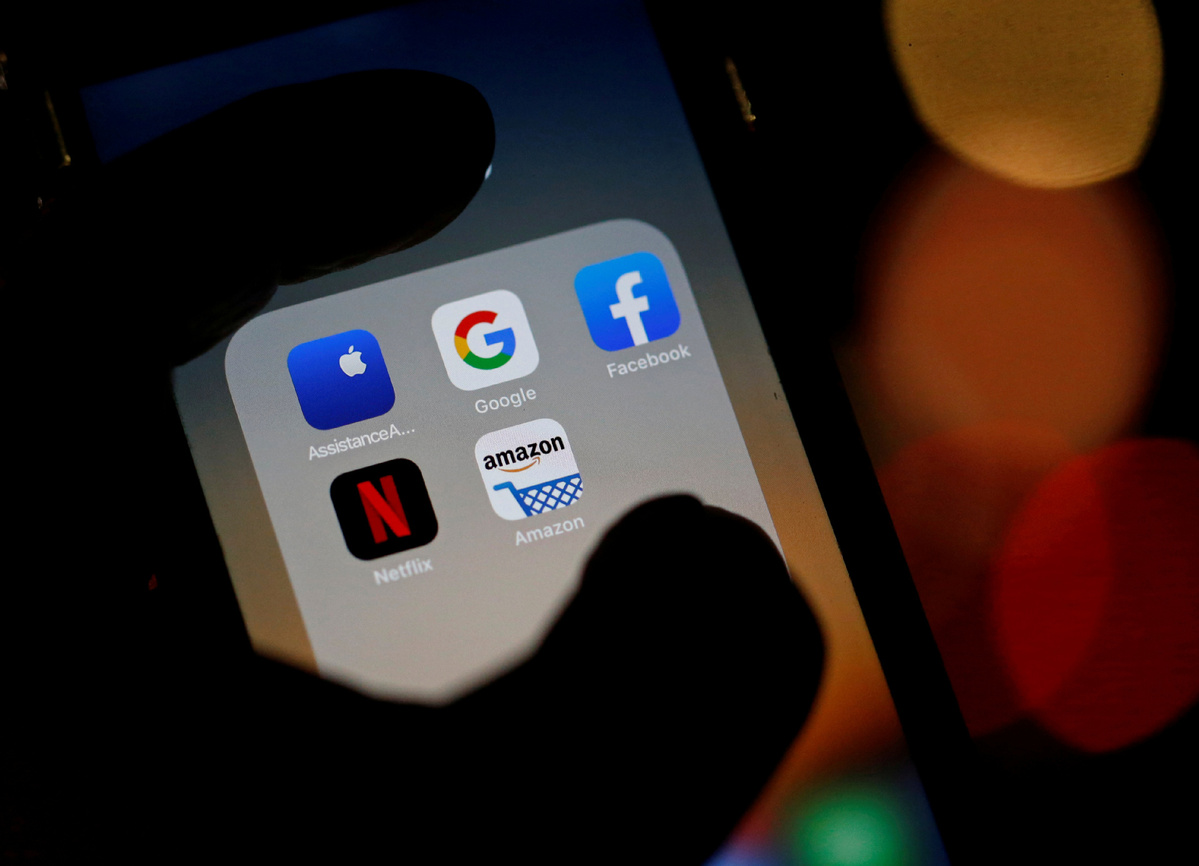Hope offered for tech-shy consumers
By MAY ZHOU in Houston | CHINA DAILY | Updated: 2019-12-27 09:33

Expert says help at hand for more US residents to close the digital divide
When it comes to using digital technologies, people have a range of attitudes.
Sally Bailey, a healthcare professional in Houston, has to operate four computers throughout the day at work, besides dealing with patients.
Once she gets home, Bailey stays away from her computer and digital devices as far as possible.
"I don't go online unless I absolutely have to, such as paying bills, looking to purchase insurance, getting continuing education required by work, responding to very limited emails from friends, and occasionally ordering something from Amazon," she said.
Bailey created a Facebook account a few years ago to follow her son's activities as a marathon runner. She never posted anything after creating her account. She does not use her smartphone to surf the internet or browse social media.
For her, a smartphone is for talking and occasional texting. "I get news from the TV only," said Bailey.
In contrast, Matthew Largent, a marketing professional in Houston, said that he uses digital tools heavily to manage both his personal life and work.
He uses marketing software at work on the computer. His phone is his personal assistant-it's used to take notes, do banking, make and remind himself of appointments, and run a variety of apps for various purposes.
Largent said he feels the need to reduce the usage of digital devices. "It can lead you off track when you find something interesting. It's better to stick to your plan than following something interesting," Largent said.
It's no surprise that Bailey, when taking a 10-question quiz testing his digital literacy from the Pew Research Center, answered only four questions correctly while Largent nailed nine questions.
The quiz was used in a recent study by Pew. The 10 questions are related to popular apps, internet privacy, security, net neutrality and digital companies. Some 4,272 adults in the US were polled last June.
The results show that US citizens' understanding of digital technology-related issues varies greatly among the population by age and education level. Adults with bachelor's degrees or higher and aged under 50 years tend to be more digitally literate.
Some issues are more widely understood-67 percent of the population understand phishing scams can occur on social media, websites, email or text messages, and 63 percent understand the function of cookies.
However, only 28 percent of the population can identify examples of true two-factor authentication. Only 15 percent of people were able to identify Twitter founder Jack Dorsey. Data security-related questions were answered correctly by less than half of the population.
As indicated by the survey, Largent's digital literacy level puts him in the top 6 percent of the population. Bailey's score has her in the top 55 percent, but that means she is better than only 45 percent of the population.
At the extremes, only 2 percent of the respondents answered all questions right and 8 percent didn't get a single question right. The gap in digital literacy is vast among US citizens.
Three aspects
While the quiz tests some basic knowledge related to digital technologies, it's difficult to nail down what exactly digital literacy means, said Ian O'Byrne, assistant professor of literacy education at College of Charleston.
O'Byrne has been researching and teaching about various forms of literacy and digital technologies for years. He is working with the International Literacy Association and the National Council of Teachers of English to redefine digital literacy.
"The challenge is that technology is always changing. The way we communicate globally is always changing as well. It's challenging to make it simple for people to understand," O'Byrne said.
He looks at digital literacy from three aspects: consumption, curation and creation.
"Consumption is being a consumer of digital content. Curation means we look at all the information online and determine what is good and what is garbage. Creation means constructing and sharing content online," O'Byrne said.
While creation of digital content is a higher level of digital literacy not necessarily practiced by everyone, society is consuming large amounts of digital content as a whole. With so much information available online, consumption of digital content requires one to tread the online world carefully, O'Byrne said.
"We have serious questions about how critically we consume, think about and evaluate the content we come across. We have a lot work to do," he said.
There is a need for curation skills, O'Byrne said. For example, when people get their electronic health records, instead of asking doctors what the entries mean, often people tend to go online to research that for themselves.
"There is a need to critically consume that, to identify people who know what they are talking about, and identify experts online that you can reach out to," he said.
The constant changes of digital technologies mean digital literacy is also constantly evolving.
"About a decade ago I started teaching my students and other adults to have one digital identity and to connect that digital identity to Facebook, WeChat, LinkedIn, Twitter or whatever. Connecting the dots so that someone can find me on all platforms," O'Byrne said.
"My thinking has changed in the last three or four years. Now we live in a world we have to be more thoughtful about privacy, security, encryption and make sure we are safe online."
After a scandal involving Cambridge Analytica in which Facebook leaked users' data, O'Byrne said he deleted all his photos from his Facebook account because he found Facebook not to be a transparent company.
"I still teach my students to have that digital identity and footprint, but I teach them to be safe and focus more on open source tools, and ask questions such as who controls my data and what data I am sharing," O'Byrne said.
After the Facebook Cambridge Analytica scandal broke out that Facebook leaked users’ data, O’Byrne said he deleted all his photos from his Facebook account because he found Facebook not a transparent company.
“I still teach my students to have that digital identity and footprint, but I teach them to be safe and focus more on open source tools, and ask questions such as who controls my data and what data I am sharing,” O’Byrne said.
“Now digital literacy also includes privacy, security and encryption, that’s relatively new.”
The ever-changing landscape of online world led O’Byrne to run a blog dedicated to digital literacy (digitallyliterate.net). he puts out weekly newsletter to summarize what’s important and what’s happening in the digital world to help people stay on top of digital issues.
His latest mid-December blog discussed security breach issues related to the popular Ring doorbells offered by Amazon and video games and online chats used as hunting grounds for sexual predators.
Being digitally literate does not end with finishing classroom learning, he said.
Keeping up with the evolving digital world indeed requires constant effort and learning. Despite doing better than 94 percent of the population on the digital literacy quiz, Largent feels that he’s falling behind in social media arena.
“I didn’t follow Twitter from the very beginning. Now I got really lost there. Same with Weibo. One time I had a job interview in China and a company asked me to look at their Weibo account to make some comment. I was confused how it works.
Even if I do understand how it works, the slang and terminologies people use, it’s still too hard for me to follow. I didn’t continue with the interview,” said Largent who had spent nine years in China and speaks fluent Chinese.























